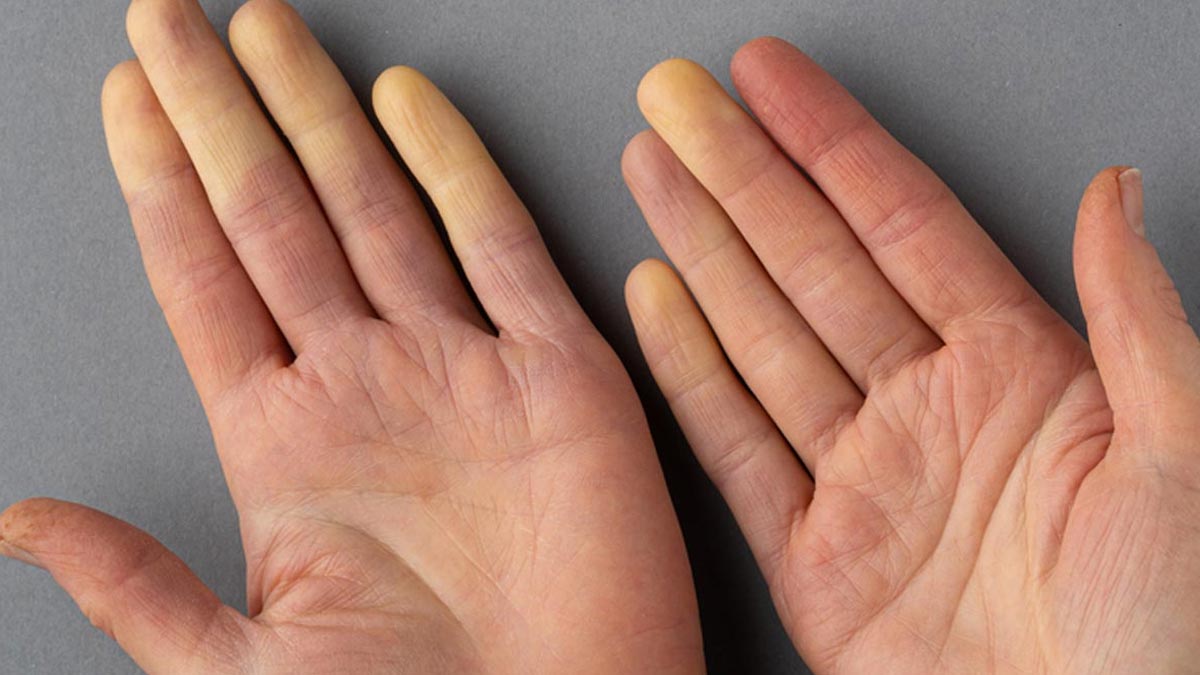
An autoimmune disease is an immune system disorder in which our immune system starts attacking the very body it is supposed to protect. There are more than 100 types of autoimmune diseases, each with a varied spectrum of symptoms and organ involvement. Scleroderma is one such rare autoimmune disease.
Table of Content:-
The University of Michigan Health states that scleroderma occurs in 30 persons per million per year and there are approximately 2.5 million active cases worldwide.
To understand this disease in depth, the Onlymyhealth team spoke to Dr Sandeep Yadav, Consultant Rheumatology, PD Hinduja Hospital & MRC, Khar.

What Causes Scleroderma?
The National Scleroderma Foundation defines scleroderma as an autoimmune disorder caused by the body producing too much collagen, a protein that forms the building blocks of connective tissue. Connective tissue is found throughout the body and provides support to organs, skin, and muscles. When too much collagen is produced, it can cause the skin and other tissues to harden and thicken.
Dr Yadav elucidated that Scleroderma typically manifests through two predominant symptoms:
- Transient whitish/bluish discolouration of the fingers upon exposure to cold, which is called Raynaud's phenomenon.
- Tightening of the skin, usually over the face and all four limbs.
“The exact cause of scleroderma is unknown. However, 30-40% of individuals with scleroderma have family members affected by other autoimmune diseases or may have similar but milder complaints,” said Dr Yadav.
He reiterated, “No single environmental factor, such as an infection or food, can be pinpointed as the cause of scleroderma. It is believed to occur in individuals with a genetic predisposition that is triggered by some unknown environmental agent.”
There are two main types of scleroderma:
- Localised Scleroderma: This type only affects the skin.
- Systemic Scleroderma: This type affects the skin and other organs in the body.
Also Read: Raynaud's Phenomenon: Symptoms, Precautions, and Treatment

Common Symptoms Of Scleroderma
As per Johns Hopkins Medicine, Scleroderma can mimic other conditions, making diagnosis and identification of the specific type more challenging. This overlap in symptoms can lead to delays in diagnosis.
Raynaud’s Phenomenon
“Transient bluish and whitish discolouration of the hands and feet upon exposure to cold often appears many years before other manifestations of scleroderma become apparent. This is typically called Raynaud's phenomenon. If left untreated, it may lead to painful, non-healing ulcers over the fingertips, which may even progress to fingertip gangrene,” explained Dr Yadav.
Skin Tightening
The second most common symptom of Scleroderma is skin tightening. “Tightening of the skin on the hands and feet, along with loss of muscle mass beneath the skin, gives the appearance of a person sinking into their skin. The skin becomes so tight that all the creases on the hands and face disappear, giving the face a mask-like appearance, with typical thinning of the lips and decreased mouth opening. These are classical features of scleroderma,” said Dr Yadav.
Also Read: Lupus: 3 Factors That Can Increase Your Risk Of This Autoimmune Disease
Pigmentation
“These are followed by hypo- and hyperpigmented patches on the skin, typically on the shins, forearms, forehead, and upper back, creating a salt-and-pepper appearance,” said Dr Yadav.
Other Symptoms
“Not all individuals will have all symptoms; some may only have skin issues, while others may experience lung and heart problems,” said Dr Yadav. He listed:
- Some patients also experience severe joint pain and swelling.
- Over time, more serious complications such as lung fibrosis and increased pulmonary artery pressure can occur.
Also Read: Expert Shares How Ginger Supplements May Help Manage Symptoms Of Autoimmune Diseases Like Lupus

How Is Scleroderma Diagnosed?
“The diagnosis of scleroderma is primarily clinical, based on characteristic signs and symptoms such as skin tightening and Raynaud's phenomenon. However, there is often a delay in diagnosis as patients may consult different specialists for various manifestations: a dermatologist for skin pigmentation issues, orthopaedics for joint problems, and a pulmonologist for lung issues,” said Dr Yadav.
To be able to diagnose Scleroderma correctly, all these symptoms have to be considered together. Dr Yadav listed the methods used to diagnose Scleroderma:
- To confirm the diagnosis, specific serological tests such as ANA (Antinuclear Antibody), Anti-SCL-70, and anti-centromere antibody tests are conducted.
- In doubtful cases, a skin biopsy can provide a definitive diagnosis.
- Consulting a rheumatologist is crucial for an accurate diagnosis and comprehensive management of the disease.
Treatment Options For Scleroderma
“Though there is no permanent cure for scleroderma, various treatment modalities are available for the organ-specific management of the disease,” stipulated Dr Yadav. He added, “These treatments can prevent disease progression, improve symptoms, and enhance the quality of life for those affected.”
- Raynaud's phenomenon is typically treated with peripheral vasodilators.
- Skin tightening can be managed by controlling inflammation through the use of immunomodulatory medications, which treat inflammation and prevent excessive fibrosis.
- More serious manifestations, such as heart and lung involvement, require multidisciplinary care involving pulmonologists and cardiologists. This approach helps prevent long-term residual fibrosis and improves the quality of life for patients with scleroderma.
Also Read: Recognising the Red Flags: 20 Signs You Have an Autoimmune Disease
Supportive Therapies For Scleroderma Patients
To ensure that your Scleroderma treatment is as seamless as possible and turns out successfully, Dr Yadav listed some supportive therapies that can improve your chances of managing scleroderma effectively:
Managing Raynaud’s Phenomenon
- Preventing hands and feet from overexposure to cold, especially in regions with severe winters, is crucial for managing scleroderma.
- Avoid working in cold water, and always wear warm gloves and socks to protect your extremities.
- Smoking can exacerbate Raynaud's phenomenon and lead to fingertip ulcers, so it should be avoided.
Managing Skin Tightening
- Preventing skin tightening from hampering the mobility of the joints in the hands and feet is another important aspect.
- Regular range-of-motion exercises for the hands and feet can improve function and flexibility.
- Keeping the skin moisturised is also essential to prevent dryness and cracking.
- Mouth exercises can help loosen the skin around the face, improving flexibility and facial expressions.
Stay Up To Date With Treatment
- Patients on immunomodulatory medications and those with lung involvement should stay up to date with vaccinations to prevent infections.
- Adhering to the medication regimen prescribed by the rheumatologist is the most important aspect of managing scleroderma.
- Regular follow-ups with healthcare providers ensure that any changes in the condition are promptly addressed and treatments are adjusted as necessary.

Scleroderma is a challenging autoimmune disease, but with proper diagnosis and management, patients can live full and productive lives. Early diagnosis is crucial to prevent complications and improve quality of life. If you experience symptoms like Raynaud's phenomenon or skin tightening, consult a rheumatologist for evaluation. While there's no cure, various treatment options can manage symptoms, slow disease progression, and enhance well-being. Remember, a healthy lifestyle with regular exercise, proper skin care, and medication adherence can significantly improve your journey with scleroderma.
How we keep this article up to date:
We work with experts and keep a close eye on the latest in health and wellness. Whenever there is a new research or helpful information, we update our articles with accurate and useful advice.
Current Version
